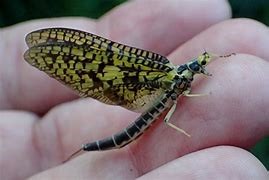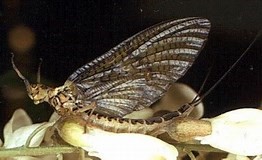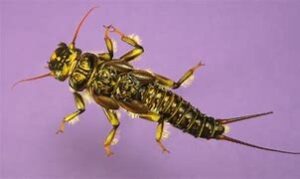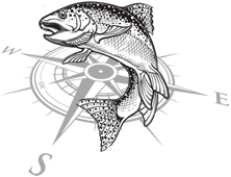Green Drake (Drunella Grandis)
From the Mayfly family Ephemeridae, Drunella Grandis or better known as the Green Drake is one of the largest Mayflies in the West. It is also one of the Mayfly hatches that gets the trout’s attention. Trout have learned through conditioned behavior that this is a big meal and when they hatch in numbers they will get the trout’s attention. Green Drakes are particular to certain rivers, you will not see them in all the western rivers like you would a Blue Winged Olive Mayfly (Baetis) or a Pale Morning Dun Mayfly. But they are common enough in the west that you will find them in a river near where you live. This is a hatch that you want to plan on going to. The term Drake finds it’s root in Greece meaning Dragon! These are large Mayflies.

The Green Drake nymph is classified as a clinger mayfly and can be found in both fast moving water and in slower moving sections of the river. These are large nymphs as you can imagine, as much as 16 mm in size and range in colors from Yellowish brown to dark brown depending on the river. Fresh clean water over gravel and rocks is the perfect environment for these clinger nymphs. They are clingers for a reason.
During a hatch or emergence it’s not uncommon for the Green Drake nymphal emerger to make numerous trips from the bottom of the river to the top. This makes for a highly active subsurface activity and should be noted that the nymph becomes an especially important fly for working this hatch. As I stated above the Green Drake Nymph is quite large and you should have quite a few of them in your dry flies. When the hatch begins it’s common for the feeding trout to key in on the nymphal emerger and then switch to the dun. You can tell by the rise forms made by the feeding trout. Small dimples, dorsal fins and tail show you they are on the floating nymphs. As the hatch progresses you will see more aggressive takes as the fish transition to taking the duns. The Green Drake Nymphs will actually move from fast moving water to slower runs before making their trip to the surface. It’s quite common to see trout feeding is slow moving flat water where they would never be without a hatch.

On Idaho’s Big Wood River the Green Drake hatch historically can begin as early as mid-June and continue well into July. What will kick off the Green Drake hatch is warm weather. Stormy, windy or a low pressure system is not the perfect time for this hatch. Mild days with sun and warm air is the perfect storm. This is usually a mid-afternoon hatch but it’s not unusual to find these guys going off early in the am or a nice spinner fall. Green Drake flies are usually in the size 8 to 10 and a good extended body dun will work. The nymphs are in the size 10 to size 12 on a 3X hook shank.


